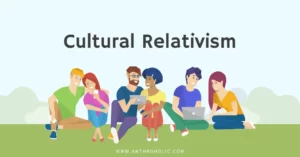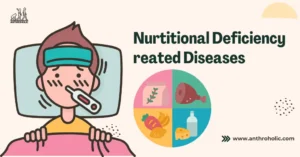AI Answer Evaluation Platform Live Now. Try Free Answer Evaluation Now
Turners Syndrome
What happens when nature writes a different biological script-one that quietly challenges our understanding of sex, growth, and human variation? Turner Syndrome (TS), a chromosomal condition affecting only females, does just that. While often discussed in clinical or genetic terms, TS also presents a compelling case study for physical anthropologists. Why? Because it reveals how genetics, growth, and skeletal development intersect in ways that shape both individual bodies and our broader understanding of human biology.

From short stature and unique skeletal features to its rare chromosomal signature (usually a 45,X karyotype), Turner Syndrome sits at a fascinating crossroads: it is a medical diagnosis, a developmental anomaly, and a lens into the flexibility and limits of human biology. In the context of physical anthropology, TS prompts questions not only about how humans vary-but also why.
What is Turners Syndrome?
Defining Turners Syndrome: A Genetic Overview
Turners Syndrome (TS) is a chromosomal condition that exclusively affects individuals with female phenotypes. It arises when one of the two X chromosomes typically present in females is missing or partially missing. The most common form is monosomy X (45,X), though mosaicism-where some cells have the typical two sex chromosomes while others have only one X-is also seen.
Clinically, TS is characterized by short stature, lack of sexual development at puberty, and infertility. However, for physical anthropologists, the intrigue lies in the way this syndrome alters growth, skeletal formation, and even craniofacial structure-making it a vital case for examining biological diversity.
Historical Recognition and Classification
Although Turner Syndrome was formally identified in the 1930s by Dr. Henry Turner, evidence of phenotypic traits resembling TS may have existed in earlier populations. Physical anthropology seeks to trace such conditions historically through skeletal remains, which adds a unique, long-term dimension to our understanding of TS beyond modern genetics.
Genetic Basis and Chromosomal Abnormalities
The 45,X Karyotype and Mosaic Variants
Most individuals with TS have a 45,X karyotype-meaning they possess only one complete X chromosome instead of the usual XX. Others may have mosaic forms like 45,X/46,XX or structural abnormalities such as isochromosomes or ring chromosomes. These genetic variations influence the severity and type of phenotypic expression.
From an anthropological angle, these chromosomal differences affect growth rates, bone density, and hormonal regulation-all of which can leave signatures in skeletal material. Since TS does not involve transmittable genes (it usually occurs spontaneously), its presence across populations is sporadic but consistent, with an estimated incidence of 1 in 2,000 to 2,500 live female births.
How Turner Syndrome Affects Biological Development
Turner Syndrome disrupts the production of sex hormones like estrogen and progesterone due to ovarian dysgenesis. As a result, puberty is either delayed or absent. Beyond reproductive consequences, the lack of hormonal regulation also influences epiphyseal fusion (closure of growth plates), overall height, and craniofacial development. In anthropology, such developmental patterns are key to interpreting age-at-death, sex estimation, and health status in both living and past populations.
Phenotypic Expression and Skeletal Markers
Stature and Skeletal Dysmorphology
Short stature is one of the most consistent features of Turner Syndrome. The average adult height without growth hormone treatment is around 4’8” (142 cm). Anthropologically, this can be linked to slower longitudinal bone growth and earlier fusion of long bone epiphyses. Skeletal remains may also show mild scoliosis, kyphosis, or other vertebral anomalies associated with TS.
Other frequent skeletal signs include:
- A broad chest with widely spaced nipples (observable in thoracic skeletons)
- Shortened fourth metacarpals and metatarsals
- Cubitus valgus (increased carrying angle of the arms)
These features are important in physical anthropology for differential diagnosis in paleopathological contexts.
Craniofacial and Dental Traits
TS is also associated with specific craniofacial characteristics. Common features include a high-arched palate, micrognathia (undersized jaw), and low-set ears. Dental anomalies such as hypoplastic enamel, taurodontism, and malocclusion are also frequent. These can be observed in both forensic and archaeological samples, offering potential clues in individual identification or health reconstruction.
Puberty, Fertility, and Secondary Sex Characteristics
The majority of individuals with TS do not undergo spontaneous puberty. In physical terms, this is reflected in a lack of breast development and immature secondary sex traits, such as minimal pubic hair. For physical anthropologists, such features may complicate sex estimation in skeletal analysis, particularly in adolescent remains where sexual dimorphism is still developing.
Turner Syndrome in Anthropological Populations
Case Studies in Osteoarchaeology
Identifying Turner Syndrome in skeletal remains is challenging due to the overlap of TS traits with other forms of developmental delay or pathology. However, several osteoarchaeological case reports suggest that TS may have been present in ancient populations.
For instance, a partial skeleton from a Roman-era cemetery in England showed a combination of short stature, hypoplastic mandible, and delayed epiphyseal fusion-traits consistent with TS. Ancient DNA (aDNA) analysis confirmed a 45,X karyotype, offering one of the rare direct links between a skeletal find and this chromosomal anomaly. These cases highlight the value of interdisciplinary collaboration between anthropologists and geneticists.
Still, TS remains difficult to confirm in most ancient contexts because:
- Soft tissue and reproductive organs do not preserve
- Skeletal manifestations can be subtle or masked by other conditions
- aDNA retrieval is not always successful due to preservation issues
Challenges of Identifying TS in Skeletal Remains
Even with good preservation, Turner Syndrome presents interpretive challenges. Many of the hallmark features-short metacarpals, mild craniofacial asymmetries-are not exclusive to TS. Anthropologists must therefore combine morphological analysis with contextual data (age, burial customs, isotopic diet indicators) and, where possible, genomic testing.
Furthermore, sex estimation algorithms can misclassify individuals with TS due to their ambiguous skeletal features. A female with TS might show less developed secondary sex traits than expected, potentially skewing sex ratios or population health reconstructions in anthropological datasets.
Evolutionary and Adaptive Considerations
The Role of Sex Chromosome Variation in Human Evolution
From an evolutionary perspective, Turner Syndrome-and other sex chromosome anomalies-offer insights into the plasticity and limits of human development. Although TS leads to infertility, the fact that it continues to arise at a stable rate (about 1 in 2,000 female births) underscores the role of meiotic error in generating biological diversity.
Studying TS helps anthropologists understand:
- How variations in sex chromosomes affect phenotypic outcomes
- The evolution of sex determination mechanisms in humans
- The boundaries of reproductive viability
In broader evolutionary terms, conditions like TS challenge binary notions of sex and highlight the complexity of sexual dimorphism in our species.
TS as a Window into Human Developmental Plasticity
Turner Syndrome reveals the extent to which human development can be resilient-even in the face of chromosomal anomalies. Many individuals with TS live into late adulthood with proper medical care. Their lives offer a lens into how genetic “exceptions” interact with environment, culture, and medicine to shape outcomes.
In anthropology, this has relevance not just for understanding rare conditions, but also for appreciating the range of what is biologically possible within the human species. TS thus contributes to the broader narrative of human variation, adaptation, and survival.
Cultural and Medical Responses Over Time
From Stigma to Medicalization
Historically, individuals with Turner Syndrome may have been marginalized due to their appearance or lack of reproductive capability. In some traditional societies, these traits could lead to social exclusion. In the modern era, however, TS is typically diagnosed early, and medical interventions such as growth hormone therapy and estrogen replacement help manage its effects.
Physical anthropology often considers how cultural context shapes the experience of biological difference. The shift from stigma to medical support in the case of TS reflects broader societal trends in how “difference” is perceived and managed.
Ethical Questions in Reproductive Anthropology
Since most individuals with TS are infertile, reproductive technologies (like donor egg IVF or surrogacy) have raised ethical discussions within reproductive anthropology. Questions around autonomy, identity, and the right to reproduce are especially pertinent in the context of genetic conditions. For anthropologists, this opens up avenues for exploring how biological limitations intersect with cultural and technological solutions.
What Turner Syndrome Reveals About Human Biological Diversity
From a physical anthropology standpoint, Turner Syndrome is more than a chromosomal anomaly-it’s a biological case study that challenges our assumptions about sex, growth, and human variation. As we’ve explored, TS affects skeletal development, stature, craniofacial form, and reproductive capacity. These effects leave subtle but meaningful markers in the human skeleton, making TS a condition of great interest to anthropologists studying both living populations and ancient remains.
At the genetic level, TS reminds us that sex is not a fixed binary, but a spectrum influenced by chromosomal, hormonal, and developmental factors. Evolutionarily, its recurring presence across time and space suggests that sex chromosome anomalies, while rare, are an enduring part of human diversity. Anthropologically, Turner Syndrome compels us to refine our methods of sex estimation, reevaluate cultural narratives around normalcy, and consider how biology and culture interact in shaping human experience.
In today’s world, advancements in DNA analysis, imaging technologies, and hormone therapies continue to expand our understanding of TS. But within anthropology, its significance lies in what it teaches us about the range of possible human forms-and the importance of interpreting biology within a broader cultural and historical context.
References
- Bondy, C. A. (2007). Turner syndrome 2008. Nature Reviews Endocrinology, 3(1), 1–10.
– A comprehensive overview of the genetic and phenotypic aspects of Turner Syndrome. - Gravholt, C. H., et al. (2017). Clinical practice guidelines for the care of girls and women with Turner syndrome. European Journal of Endocrinology, 177(3), G1–G70. – Includes biological and clinical features of TS that inform anthropological understanding.
- León, C., et al. (2020). Human aneuploidy through time: Turner syndrome in skeletal remains from a Roman site in England. International Journal of Paleopathology, 30, 1–10. – A key osteoarchaeological case study identifying TS in ancient skeletal remains using DNA and morphological analysis.
- Horsman, A., & Pearson, K. (1981). Skeletal abnormalities in Turner’s syndrome. Journal of Medical Genetics, 18(1), 1–9. – Details the skeletal traits seen in individuals with TS, which are relevant to physical anthropology.
- Skuse, D. H. (2005). X-linked genes and mental functioning. Human Molecular Genetics, 14(Suppl_1), R27–R32. – Offers insights into X chromosome function and its variability, relevant to understanding TS in evolutionary terms.
- Carrel, L., & Willard, H. F. (2005). X-inactivation profile reveals extensive variability in X-linked gene expression in females. Nature, 434, 400–404.– Explores the genetics behind X-chromosome inactivation, shedding light on the variability in TS expression.



